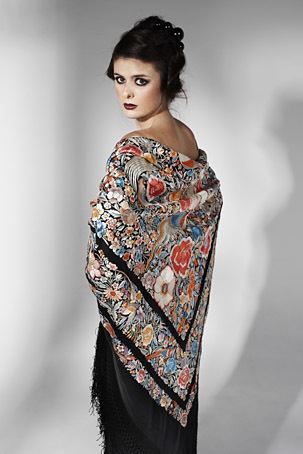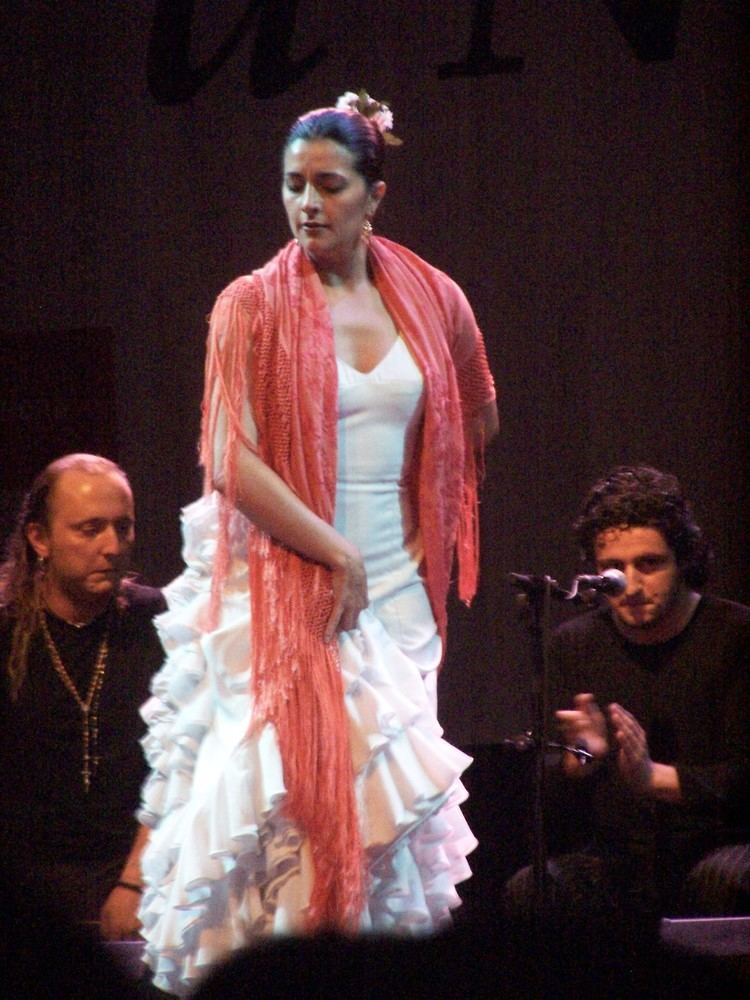 | ||
The manila shawl museums visualizing spanish exhibits eng
The Manila shawl is an embroidered silk shawl associated with the Port of Manila.
Contents
History
The Manila Galleon trade was started in 1565 by Andrés de Urdaneta, who discovered the route from Manila to Mexico. This route passed the northern Pacific, bypassing Japan and skirted the California coast down to Acapulco in Mexico. The Spanish king allowed the Filipinos to trade with the Chinese in Canton. They brought silks, ivory, furniture, porcelain, lacquerware, and spices from Canton to Manila and the Chinese merchants were paid for these goods with silver coins from Mexico. Then, once or twice a year, the galleon went to Acapulco through the route discovered by Urdaneta. The merchandise then traveled overland from Acapulco to Veracruz. At Veracruz, the merchandise was put on ships that traveled in convoy to Seville, accompanying other ships that were bringing gold and silver from the Americas to Spain. Spanish warships accompanied the galleons to Seville to protect them from pirates. Later in 1718, the port used in Spain was changed to Cadiz from Seville, since a sandbar blocked the port of Seville and ships could not reach Seville. The Manila Galleon trade stopped in 1815, when the Mexican War of Independence took place.

One of the items that came from Canton to Manila was the silk shawl. It was a square piece of cloth with plenty of embroidery. The shawl was folded in half like a triangle and worn over the shoulders of women. This shawl became known as the manton de Manila, although it was not made in Manila, but was made in Canton. The Philippines never had a silk industry. The manton de Manila soon became very popular in Seville, Andalusia, and in Latin America.
The embroidered figures first had many themes, including designs of frogs, Chinese people and scenes, and birds and flowers. The embroidery soon changed to themes that were popular with women of Seville and designs of frogs disappeared. The women of Seville also asked that deep fringes be added to the borders of the shawls, so that when one wore the shawl, there would be movement of the fringes, which would call attention to the wearer.
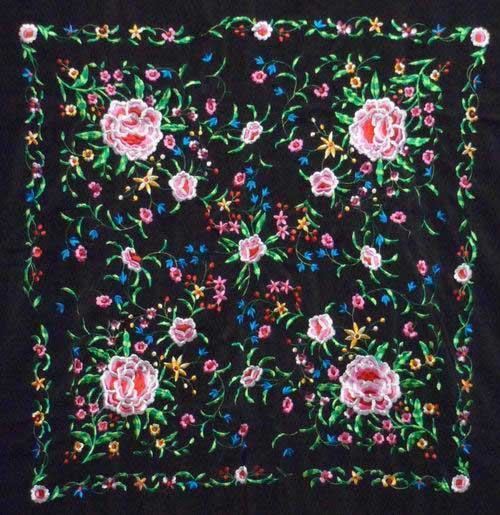
During part of the 19th century, romanticism took over and Parisian fashions dictated that the shoulders of women should be left uncovered. Spanish women copied the fashion and they found that the manton de Manila was a very good thing to wear with these dresses, as the shawl provided some warmth to the bare shoulders. The manton was also used to decorate grand pianos in houses, as can be seen in the recently reopened Museo del Romanticismo in Madrid. Beside pianos, the manton was also used to decorate sofas in elegant houses. Many Spanish houses today still use the manton to decorate pianos and sofas.
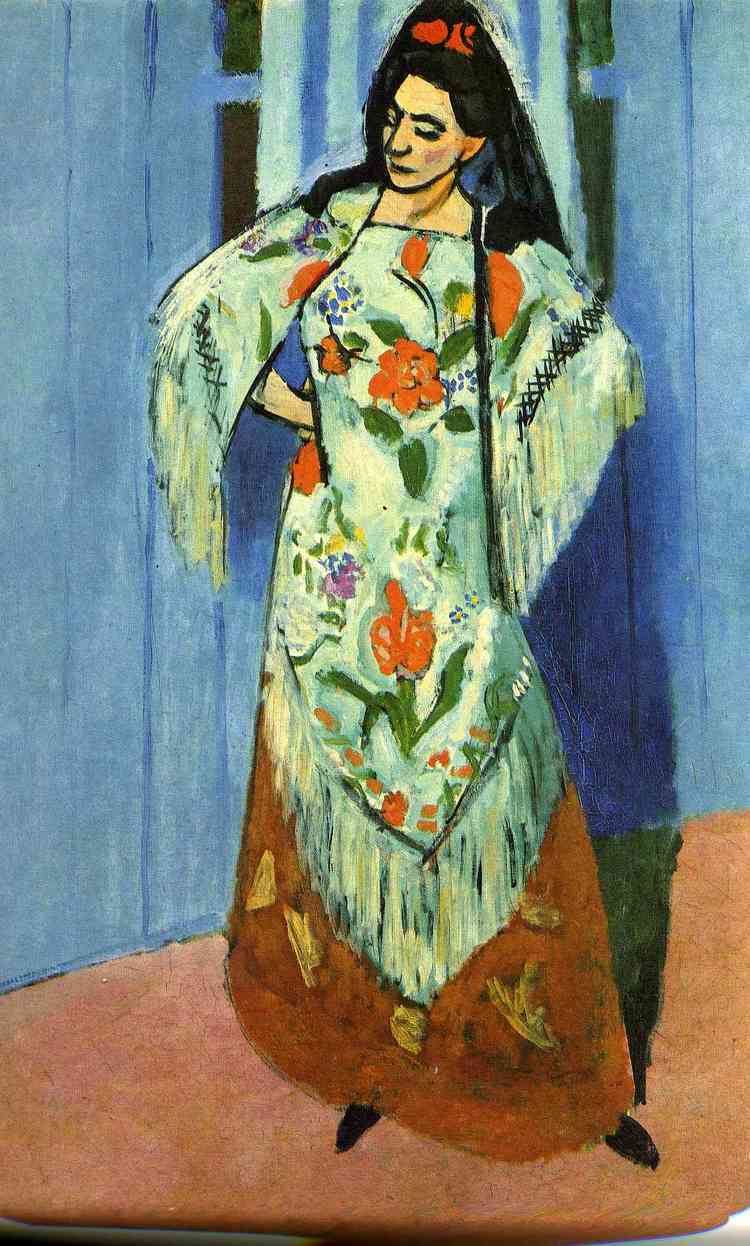
Today, the manton de Manila is still very popular in Andalusia for festive occasions. Women use the shawls for dressing up and going to parties. During the Festival of the Crosses of May in Cordoba, balconies are dressed up with the manton that add a bright look to the plazas. During the April Fair in Seville, most of the women in Gypsy dress (flamenco dress) use the manton as an accessory. The manton is also used by female flamenco dancers during their dance, as it is a great dance enhancer and adds drama when the flamenco dancer twirls it around her body and in the air. Sara Baras and Maria Pages are two of the most best flamenco dancers in Spain and they are experts in twirling their manton during the dance. Famous Spanish singers who sing the copla, a traditional form of song, also are dressed in the manton. One of the most popular singers of this genre is Isabel Pantoja, and she has a great variety of beautiful mantons.
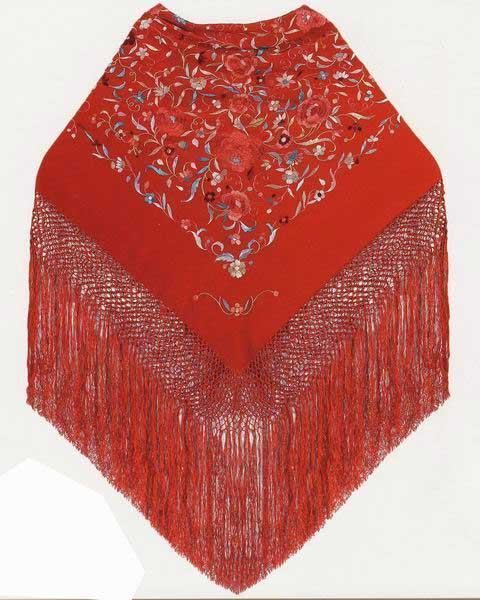
Many of the cheaper mantons are imported from China, and they may range in price from 20 to 300 euros, depending on the amount of embroidery used. The cheaper ones are made of polyester, and the more expensive ones are made of silk. The best mantons found in Spain today are made of silk and are made in Seville, and they are priced from 300 to 2000 euros. One can see the most beautiful mantons by walking along Calle Sierpes, one of the principal pedestrian streets in Seville. One can also see beautiful dresses made from the manton. The manton de Manila is an integral part of Spanish culture today.
References:
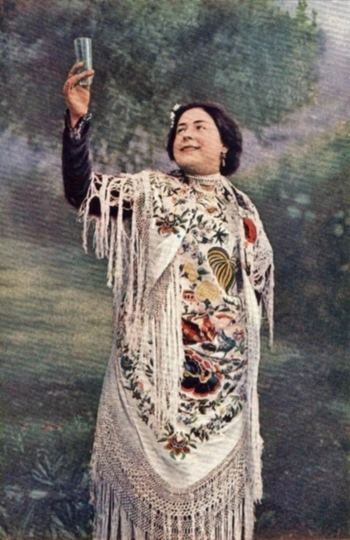
1. Fascinados por Oriente, Ministerio de Cultura, by Fernando Saez Lara, Sofia Rodriguez Bernis, and Arantxa Chamorro Malagon, 2010.
2. Filipinas - Obras Selectas del Museo Oriental, by Blas Sierra de la Calle.
